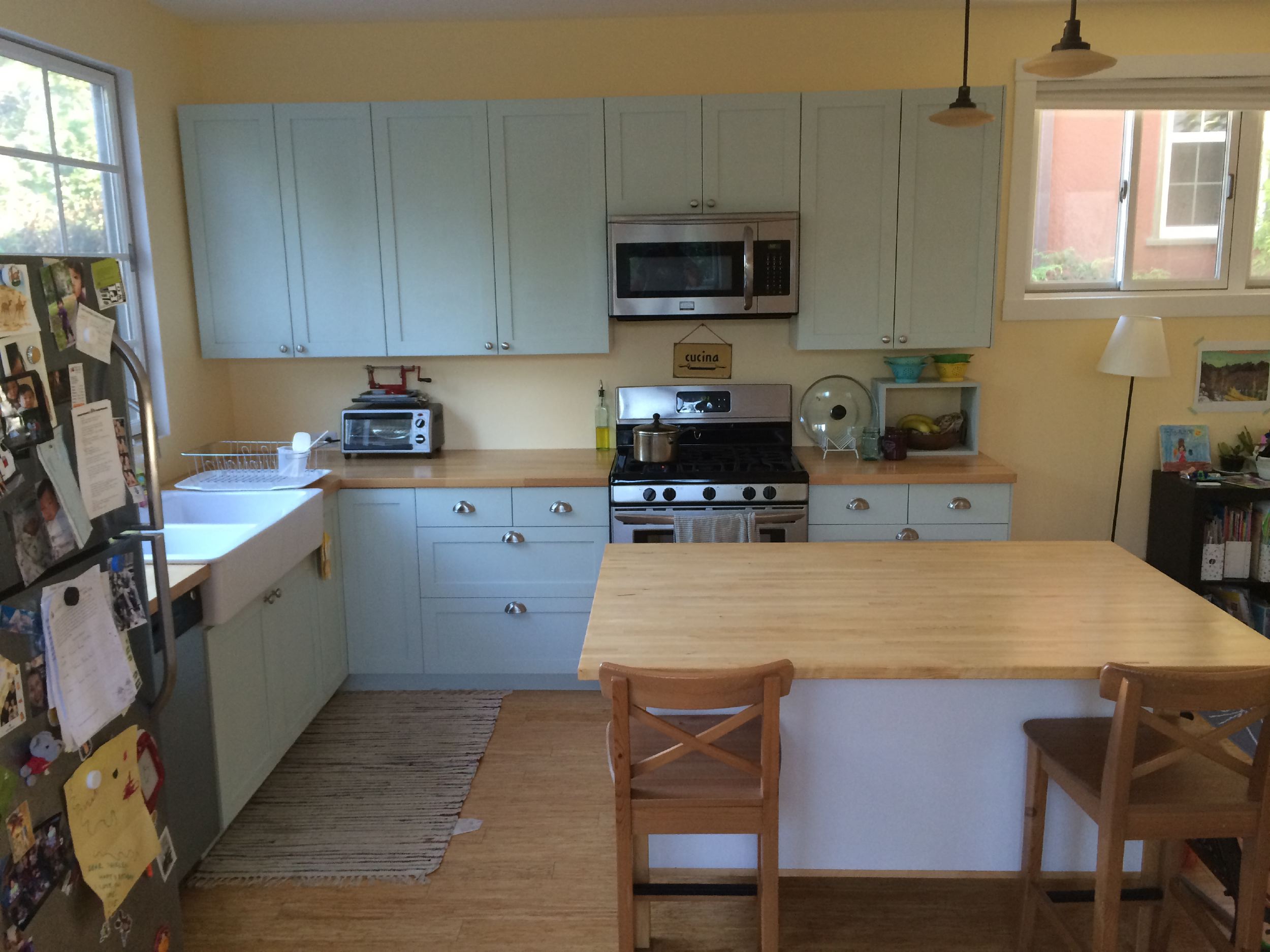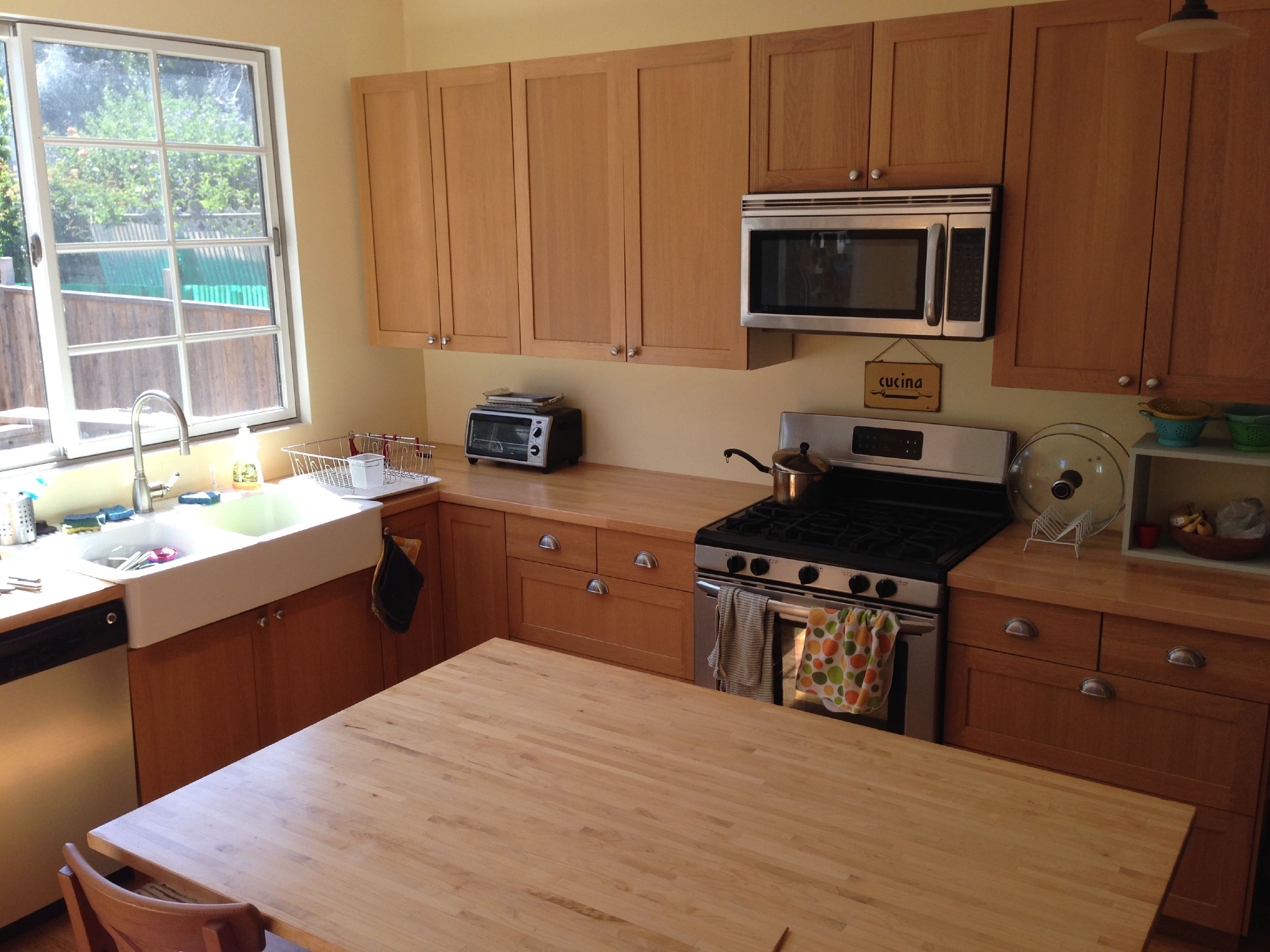Preparing Your IKEA Kitchen Cabinets

Before you start painting your IKEA kitchen cabinets, you need to prepare them for a smooth and lasting finish. This involves cleaning, sanding, and masking off areas to ensure the paint adheres properly and creates a professional-looking result.
Cleaning and Sanding IKEA Cabinets
Cleaning and sanding your IKEA kitchen cabinets are crucial steps to ensure the paint adheres properly and creates a long-lasting finish. This process removes any dirt, grease, or existing finishes that could hinder the paint’s adhesion.
- Start by removing any hardware from your cabinets, including knobs, handles, hinges, and drawer slides. Store these items safely to avoid losing them during the process.
- Use a mild detergent and warm water to clean the cabinet surfaces thoroughly. Pay attention to areas that may have accumulated grease or food spills. Rinse the cabinets with clean water and allow them to dry completely.
- Once dry, use fine-grit sandpaper (120-grit) to lightly sand the entire surface of the cabinets. This creates a slightly rough texture, providing a better surface for the paint to adhere to.
- After sanding, wipe down the cabinets again with a damp cloth to remove any dust or sanding residue.
Removing Hardware and Masking Off Areas
Removing hardware and masking off areas are essential steps to prevent paint splatters and ensure a clean, professional finish.
- Before you start painting, remove all hardware from your IKEA kitchen cabinets. This includes knobs, handles, hinges, and drawer slides. Using a screwdriver or a wrench, carefully remove the hardware and store it in a safe place.
- To avoid getting paint on areas you don’t want to paint, use painter’s tape to mask off areas such as countertops, walls, and any other surfaces near the cabinets. Apply the tape carefully, ensuring a tight seal to prevent paint from seeping underneath.
- If you have any decorative trim or molding on your cabinets, use painter’s tape to mask off these areas as well. This will help to create clean lines and prevent paint from getting on the trim.
Choosing the Right Paint

The paint you choose for your IKEA kitchen cabinets will significantly impact their appearance and durability. With various paint types available, it’s crucial to understand their properties and choose the best option for your needs.
Paint Types for IKEA Kitchen Cabinets
Understanding the different paint types will help you make an informed decision. Here’s a breakdown of the most common options:
- Latex Paint: Latex paint is water-based and offers several advantages, including easy cleanup with soap and water. It dries quickly and emits low VOCs, making it a good choice for indoor use. Latex paint is generally durable and offers good adhesion to various surfaces, including IKEA cabinets. However, it may not be as durable as oil-based paint in high-traffic areas or areas prone to moisture.
- Enamel Paint: Enamel paint, often oil-based, provides a hard, durable finish that is resistant to scratches and stains. It’s a good choice for kitchen cabinets as it can withstand the wear and tear of daily use. Enamel paint also offers a high-gloss finish, giving your cabinets a sleek and polished look. However, oil-based enamel paint requires mineral spirits for cleanup, takes longer to dry, and can emit strong fumes.
- Oil-Based Paint: Oil-based paint provides a durable and long-lasting finish, making it suitable for high-traffic areas. It offers excellent adhesion and resistance to moisture, making it a good choice for kitchen cabinets. However, oil-based paint requires mineral spirits for cleanup, takes longer to dry, and can emit strong fumes.
Comparing Paint Brands
Here’s a table comparing the characteristics of various paint brands specifically for IKEA cabinets, based on customer reviews and expert recommendations:
| Brand | Type | Durability | Finish | Drying Time | VOCs | Price | Benjamin Moore | Latex, Enamel | Excellent | Matte, Satin, Semi-Gloss, High Gloss | 2-4 hours | Low | High | Sherwin-Williams | Latex, Enamel | Excellent | Matte, Satin, Semi-Gloss, High Gloss | 2-4 hours | Low | High | Valspar | Latex, Enamel | Good | Matte, Satin, Semi-Gloss, High Gloss | 2-4 hours | Low | Mid-Range | Rust-Oleum | Latex, Enamel | Good | Matte, Satin, Semi-Gloss, High Gloss | 1-2 hours | Low | Mid-Range | Kilz | Latex, Enamel | Good | Matte, Satin, Semi-Gloss, High Gloss | 1-2 hours | Low | Mid-Range |
|---|
Remember that paint performance can vary depending on the application and environmental factors. It’s always a good idea to test the paint on a small, inconspicuous area before painting the entire cabinet.
Painting Techniques for IKEA Kitchen Cabinets: How To Paint Ikea Kitchen Cabinets

Now that you’ve prepped your cabinets and chosen your paint, it’s time to get your hands dirty! Painting IKEA kitchen cabinets can be a fun and rewarding project, but it’s essential to use the right techniques to achieve a professional-looking finish. This section will guide you through different painting techniques and how to achieve a smooth, flawless result.
Choosing the Right Painting Technique
The best painting technique depends on the size and shape of the cabinet parts you’re working on. For example, a brush is ideal for small, intricate areas, while a roller is better suited for large, flat surfaces. Spray painting can be efficient for cabinets with multiple pieces, but it requires proper ventilation and protective gear.
- Brush Painting: Ideal for detailed areas like cabinet doors, drawer fronts, and molding. Use a high-quality brush with soft bristles to ensure smooth application and prevent brush strokes.
- Roller Painting: Perfect for painting large surfaces like cabinet boxes and drawer sides. Use a roller with a nap length appropriate for the paint type and surface texture.
- Spray Painting: Efficient for painting multiple cabinets or large surfaces, but requires proper ventilation and protective gear. Use a spray gun designed for latex paint and follow the manufacturer’s instructions carefully.
Primer Application
Primer is essential for creating a smooth, even surface for the paint to adhere to. It also helps to hide any imperfections in the wood or previous paint layers.
- Prepare the Surface: Clean the cabinet surfaces with a mild detergent and water to remove any dirt, grease, or dust. Allow them to dry completely before applying primer.
- Apply Primer: Use a brush, roller, or spray gun to apply a thin, even coat of primer to all surfaces. Follow the manufacturer’s drying time recommendations.
- Sand Lightly: Once the primer is dry, lightly sand the surface with fine-grit sandpaper to create a smooth, uniform finish. Remove any dust before proceeding to the next step.
Applying Paint Coats, How to paint ikea kitchen cabinets
Applying multiple thin coats of paint is crucial for achieving a smooth, durable finish. This allows the paint to dry evenly and prevents the appearance of brush strokes or roller marks.
- Apply the First Coat: Use your chosen painting technique to apply a thin, even coat of paint to all surfaces. Ensure you cover all areas and avoid any drips or runs.
- Allow to Dry: Follow the manufacturer’s drying time recommendations for the paint you’re using. Typically, it takes 2-4 hours for a coat to dry completely.
- Apply Additional Coats: Once the first coat is dry, apply a second coat of paint using the same technique. Allow it to dry completely before applying any additional coats.
Achieving a Professional Finish
Achieving a smooth, professional finish on IKEA kitchen cabinets requires attention to detail and proper technique. Here are some tips to help you achieve a flawless result:
- Use High-Quality Paint: Opt for a paint specifically designed for kitchen cabinets, as it will be more durable and resistant to scratches and stains.
- Thin the Paint: If you’re using a brush or roller, thin the paint slightly with water or paint thinner to improve its flow and reduce brush strokes.
- Avoid Overlapping: When applying paint, avoid overlapping strokes, as this can lead to uneven coverage and brush marks.
- Sand Between Coats: Lightly sand the surface between coats with fine-grit sandpaper to create a smooth, even finish. Remove any dust before applying the next coat.
- Clean Up Thoroughly: After painting, clean your brushes, rollers, and spray gun thoroughly with soap and water or paint thinner.
How to paint ikea kitchen cabinets – Painting IKEA kitchen cabinets can be a great way to refresh your space, but you want to make sure the finish is durable. A good way to do this is to use paint hardener for cabinets to strengthen the paint and prevent chips and scratches.
This will help your cabinets look great for years to come, even with the daily wear and tear of a busy kitchen.
Giving your IKEA kitchen cabinets a fresh look with paint is a fantastic way to personalize your space. But before you grab the brush, it’s worth considering the lacquer vs paint cabinets debate. Lacquer offers a durable, high-gloss finish, while paint provides more versatility in color and texture.
Ultimately, the choice depends on your desired aesthetic and level of durability. Once you’ve made your decision, you’re ready to tackle that IKEA kitchen cabinet makeover!
